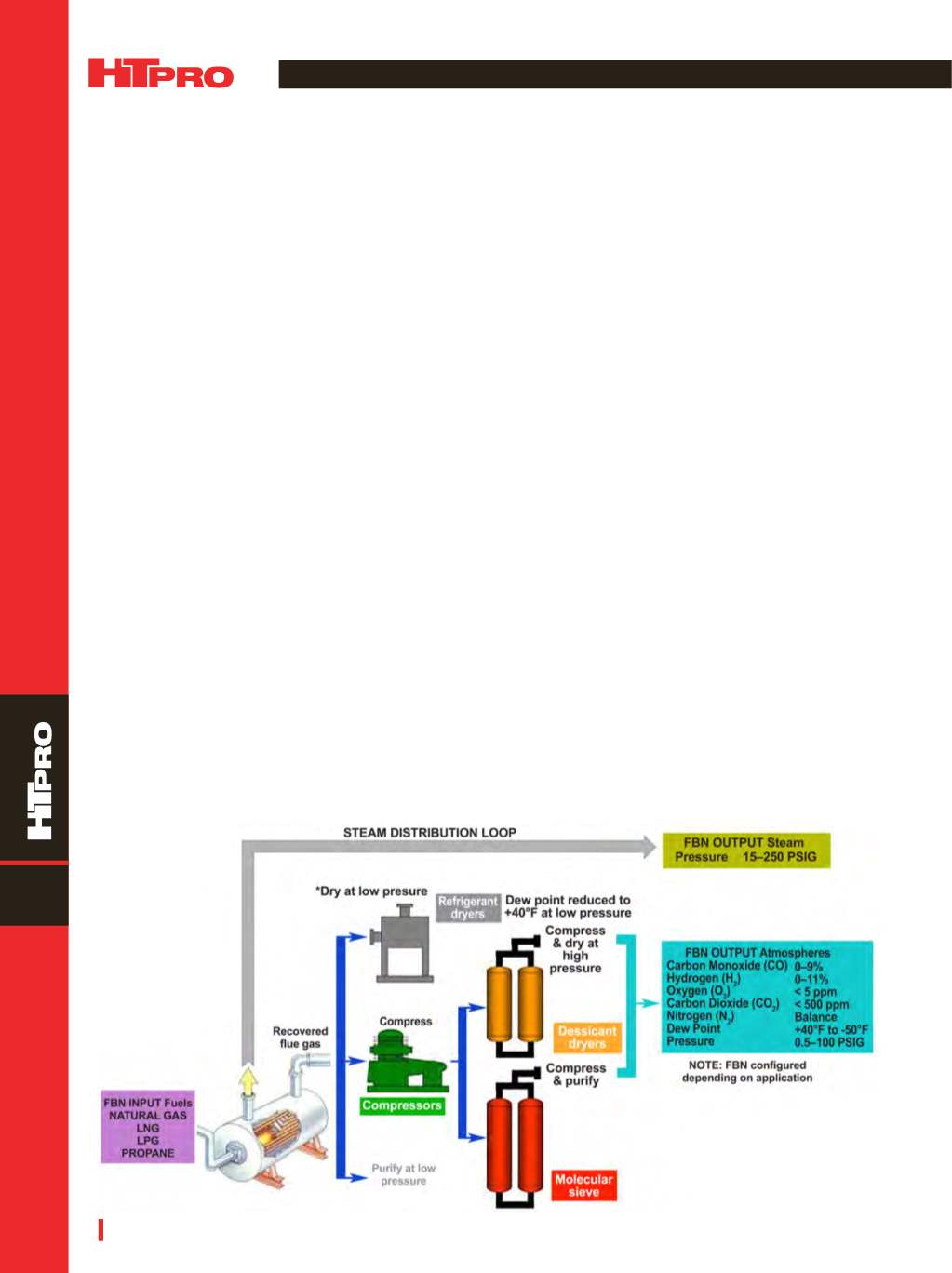

FEATURE
A D V A N C E D M A T E R I A L S & P R O C E S S E S | N O V E M B E R / D E C E M B E R 2 0 1 5
6 6
10
REDUCING THE COST OF HEAT TREATING ATMOSPHERES
Conserving utilities is the simplest, most practical way for heat
treaters to reduce costs and remain competitive.
Bud Weiland,
ERC International Inc., Cleveland
W
hile natural gas costs have been declining since
2014, bulk nitrogen costs have not followed the
same track. As nitrogen supply becomes an in-
creasing portion of the total cost to process metal prod-
ucts, technologies to generate nitrogen on-site become
viable. Many of the largest industrial gas suppliers will
install on-site air separation plants for producing nitrogen
for their larger consumers, but these arrangements typi-
cally come with high-commitment take-or-pay contracts.
For consumers in the middle range (e.g., 10-60,000 scfh
nitrogen requirements), bulk liquid nitrogen is the least
expensive among expensive options. By comparison, co-
generation technology, producing two utilities using one
process, has the potential to greatly reduce costs at facili-
ties that can fully use both utilities.
BENEFITS OF COGENERATION TECHNOLOGY
ERC International supplies cogeneration equipment
to manufacturing facilities that consume both nitrogen and
steam, with the largest market presence in the metals pro-
cessing industries. The fastest return on investment is seen
by facilities using delivered liquid nitrogen and plant steam.
There is also added value to facilities generating their own
endothermic gas, a carbon-intensive atmosphere used in
the heat treating industry. The typical ERC user is a metal
processor that has large heat treating furnaces, consumes ni-
trogen in the range of 10-60,000 scfh, and uses steam (or hot
water) for heating acid pickling tanks. For bright annealing
and annealing of medium carbon alloy steels, endothermic
gas is sometimes blended with nitrogen. All of these utilities
(nitrogen, steam, and the total supplies for the endothermic
generator) are delivered by one ERC cogeneration unit.
ECONOMIC BENEFIT
The economic benefit comes from replacing the cost
of nitrogen and endothermic gases with just the cost to
run the purification section of the cogenerator. The fuel to
run the steam section of the cogenerator (natural gas or
propane) is equal to the fuel being used to generate plant
steam and, thus, is cost neutral. The difference is that the
cogenerator products of combustion are carefully controlled
to be suitable for purification into a very good atmosphere
gas compared with conventional plant boilers that are just
venting their products of combustion. Users keep their
Schematic of ERC International fuel-based nitrogen cogeneration system.


















